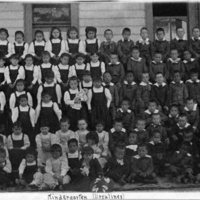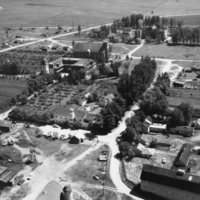The Fated Surroundings
“The Fated Surroundings” is an independent undergraduate research project undertaken by English Major, Daniel Hodge. Over the Spring, 2017 semester, Hodge served as a Digital Humanities Intern, working with Gonzaga's Visiting Scholar in Digital Humanities, Dr. Katey Roden, to explore the ways in which archival research might enrich literary analysis of historical fiction. This project is the result of one student spending many hours reading a work of fiction and pouring over materials in Gonzaga's Jesuit Oregon Province Archive.
"The Fated Surroundings", by Daniel Hodge:
This project aims to explore a complicated history revolving the colonial arrival of Jesuit Missionaries onto Native American reservations--particularly the Flathead Reservation in Western Montana. All of the images included in the project are photos extracted from the Jesuit Oregon Province Archives (JOPA) at the Foley Center Library, Gonzaga University. Before talking about the project, it’s important to note that the gaze (or scope) of these materials rely heavily on the point of view from the Jesuit Missionaries. In their attempt to document history, these images did not allow for me to discover the viewpoint or opinions of the Indigenous people to the land. Because of this limitation, the only way to present this material with a level gaze was by contextualizing the resources from the archive, with D’Arcy McNickle's novel, "The Surrounded."
In a review, one scholar identified McNickle as, "a distinguished anthropologist and writer, and one of the founders of the National Congress of American Indians, the late D'Arcy McNickle was a member of the Confederated Salish and Kootenai tribes of Montana." The inclusion of McNickle's novel drives the leveling scope of this project because historically, the complicated history of these two cultures is often romanticized by the dominant ideology. Without McNickle’s experienced critiques of this ideology, the project would inevitably fail as because of it’s lack of interrogation with both peoples who inhabited the reservation.
The novel takes place on the Flathead Native American Reservation in Montana. McNickle's protagonist, Archilde Leon, goes on a fated journey revealing the complex relationship that developed between the Jesuit Missionaries and the Native American peoples. The novel provides its reader with realistic depictions of reservation life for both the indigenous people to the lands and the Jesuit Missionaries who arrived onto the reservation in the fall of 1854. By providing images and journal entries from historical moments on the Reservation, consumers of my project can then articulate whether the relationship between the two groups was a colonial one, or a intersectional one. With this sudden clash of culture, who was greatly affected?
McNickle initially portrays the black robed priests as white settlers who did not arrive hoping to force the indigenous people to assimilate—but as the novel moves a long, and the Native peoples become more demobilized by the white settlers, McNickle reveals a shift in the relationship between the black robes and the local tribes of the Flathead Reservation. As the Native peoples became justifiably more rebellious, McNickle depicts the newer black robed priests as a group of peoples who did not care to entertain the history of indigenous cultures—they became solely focused on forced assimilation. On the opening page of the print based text, McNickle adds a note which reads, "they called that place Sniel-emen (mountains of the surrounded) because there they had been set upon and destroyed."
Intersectionality of Cultures

This section seeks to explore the different ways in which Native American's and the Jesuit priests interacted both inside and...
The Mission Grounds

This exhibit is important for us as readers to visualize the setting of the novel and the places each character...
